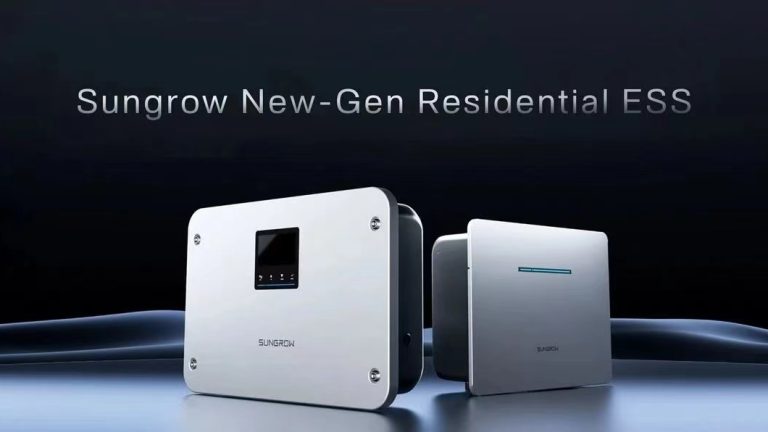What Installers and Distributors Must Know Before Connecting Battery Systems
Not All Batteries Are Plug-and-Play
As solar + storage systems gain popularity worldwide, many integrators face this critical question:
“Can my hybrid inverter work with both lead-acid and LiFePO₄ batteries?”
The answer is not always — and making the wrong connection may result in:
- ⚠️ Reduced battery lifespan
- ⚠️ Poor charging behavior
- ⚠️ Inverter alarms or faults
- ⚠️ Voided warranties
This guide walks you through:
- Key differences between lead-acid and lithium batteries
- What inverters need to properly support each type
- Common compatibility issues and solutions
🔋 Battery Basics: Lead-Acid vs. LiFePO₄
| Feature | Lead-Acid (AGM/Gel) | LiFePO₄ (LFP) |
|---|---|---|
| Cost | Lower upfront | Higher upfront, lower lifecycle cost |
| Depth of Discharge | 50% typical | 80–95% usable |
| Cycle Life | 500–1000 | 3000–6000+ |
| Charging Control | Simple (voltage-based) | Requires tight BMS control |
| Maintenance | May need water or balance | Maintenance-free |
| Communication | None | Needs CAN/RS485 with BMS |
🧠 Inverter Requirements for Lead-Acid
Most hybrid inverters support lead-acid batteries in voltage-control mode, where charging and discharging is based on:
- Battery voltage levels (e.g. 12V/24V/48V)
- Predefined charge/discharge stages (bulk, absorb, float)
- No battery communication required
✅ This makes lead-acid batteries broadly compatible with many low-cost inverters.
💡 Key Settings for Lead-Acid Mode
- Charge voltage (e.g., 14.4V x 4 = 57.6V for 48V system)
- Absorb time and float voltage
- Low voltage disconnect setting
- Temperature compensation (if available)
🛠️ Make sure to manually input the settings — and never use lithium profiles when working with lead-acid.
🔗 Inverter Requirements for LiFePO₄
LiFePO₄ batteries are not safe to use in voltage-only mode unless they are explicitly designed as “drop-in replacements” with built-in BMS.
Most modern LFP batteries require:
- 🔄 Real-time communication between inverter and BMS
- Protocols like CAN bus or RS485
- Safe cutoff commands (over-temp, overcharge, under-voltage)
- Proper charging curve and current limits
⚠️ If the inverter doesn’t “talk” to the battery, you risk overcharging, deep discharging, or system shutdown.
🤖 What “Battery Compatibility” Actually Means
When an inverter spec sheet says “Compatible with Lithium Batteries”, ask:
| Question | Why It Matters |
|---|---|
| Which brands are supported? | Most inverters only work with a list of certified battery brands |
| What communication protocols are supported? | Must match battery BMS: CAN / RS485 / Modbus |
| Can I adjust charge/discharge current? | Some lithium batteries have low current limits |
| Is a dry contact or BMS signal required? | Some setups require BMS to signal to inverter for safe operation |
✅ Many high-end inverters support both BMS communication mode and custom voltage mode — the latter for testing or offline systems.
📉 Common Mistakes and Problems
| Mistake | Result |
|---|---|
| Using lithium battery in “lead-acid” mode | Shortens battery life, disables protection |
| Failing to match BMS protocol | No charging, inverter error |
| Using cheap inverter with no lithium profile | System fails or operates unsafely |
| Overloading lead-acid with high inverter current | Rapid battery degradation |
🔄 Mixed Systems: Can You Combine Battery Types?
Generally not recommended. Mixing lead-acid and LiFePO₄ in the same DC bus leads to:
- Different charge/discharge behavior
- Voltage mismatch
- Possible backfeeding
- Warranty issues
If absolutely necessary, use independent inverters or DC-coupled isolation.
✅ Installer Checklist
Before connecting any battery to your inverter:
☑️ Confirm nominal battery voltage (e.g., 48V)
☑️ Check supported BMS protocols (CAN/RS485)
☑️ Load battery brand profile into inverter (if required)
☑️ Set correct charge voltage, current, and LVD
☑️ Monitor first full cycle for abnormal behavior
☑️ Upgrade inverter firmware if battery model is new
🔌 Example Compatibility Chart
| Inverter Brand | Lead-Acid Mode | LiFePO₄ BMS Support | Notes |
|---|---|---|---|
| Growatt SPF | ✅ Yes | ⚠️ Limited models | BMS only for select lithium brands |
| Deye/SunSynk | ✅ Yes | ✅ Full CAN & RS485 | Supports multiple brands, editable |
| Victron | ✅ Yes | ✅ With Venus OS | Very flexible, best for pros |
| GoodWe | ✅ Yes | ✅ Smart BMS via CAN | Use correct firmware version |
| MPP Solar | ✅ Yes | ⚠️ Basic support only | Not suitable for smart lithium packs |
Choose the Right Match
The inverter–battery relationship is like a partnership: if they can’t talk, it won’t work.
- For low-budget systems, lead-acid may still be viable — but configure carefully.
- For modern storage, LiFePO₄ + a compatible inverter with BMS support is the safest path.
✅ Always check documentation from both battery and inverter vendors. Don’t trust the label alone.









